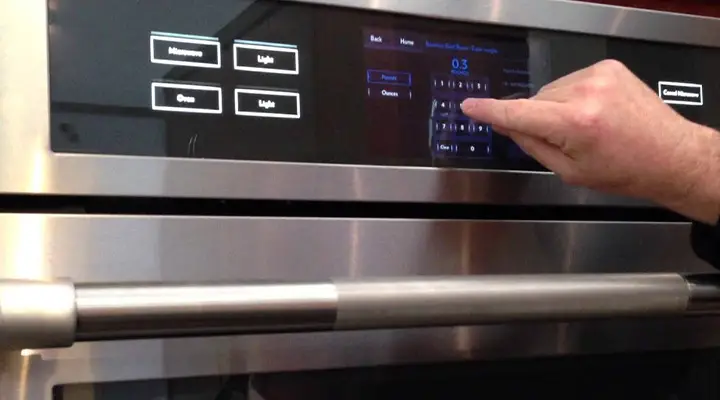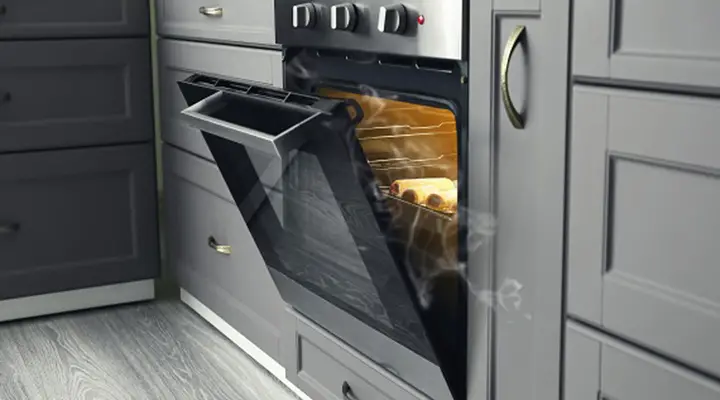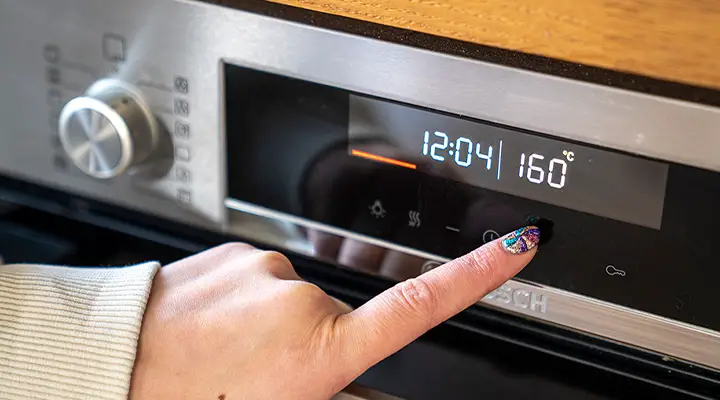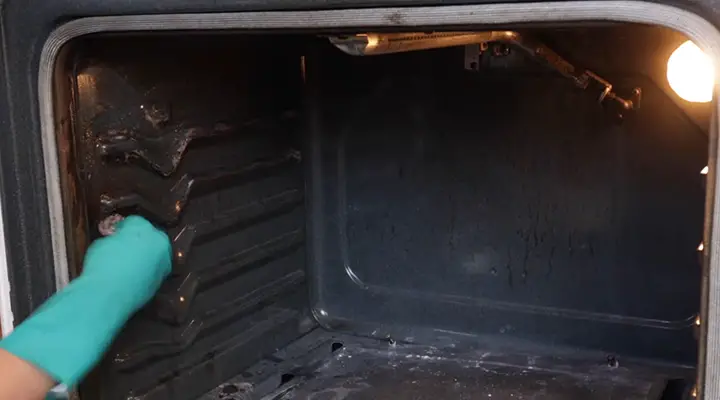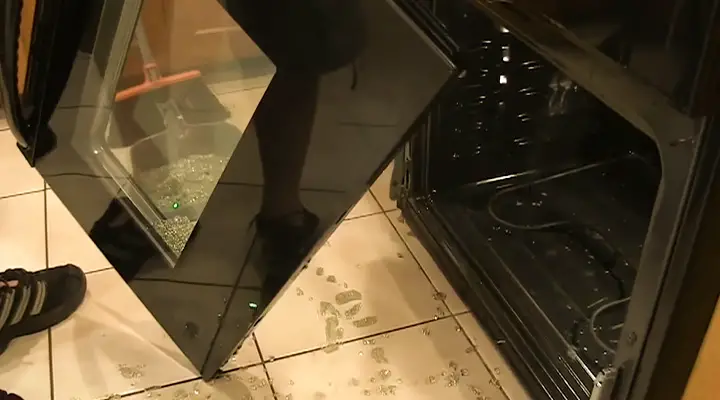How Long to Leave Oven Cleaner On? Overnight?
It is possible to damage your health if you improperly use oven cleaners. Overusing oven cleaners may lead to oven breakdown. Generally, all oven users have a common question, are oven cleaners safe to leave on for long periods of time? Almost anything can be cleaned in your oven with oven cleaners, which are very effective. The amount of oven cleaner you should use per gallon shouldn’t exceed 3 to 4 tablespoons. The recommended amount of oven cleaner per gallon is 8 to 10 tablespoons. These are some suggestions to help you decide what works for you.
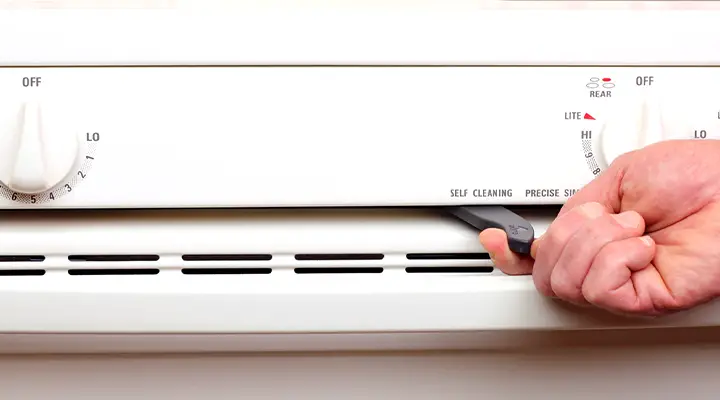
How Long Should You Use The Oven Cleaner?
During the Long Cycle of Self-Cleaning:
Your oven is taking a long time to clean itself when it is in self-cleaning mode. A self-cleaning oven typically incinerates food particles within four to five hours when its temperature reaches about 1,000 degrees Fahrenheit.
Before setting the automatic cleaning module, it is recommended that you wipe the surface manually. This will prevent odors from spreading. Keep animals away from the oven as you clean it and avoid removing anything from the vents.
It is necessary to remove the oven racks before using this feature, as the high temperatures damage the coating on the racks and make them difficult to slide into the oven. To prevent this from happening, wipe the surface with oil. Due to the high temperatures, the chrome will never regain its sheen.
Using Steam to Clean an Oven:
A steam cleaning feature is now included in many newer oven models, eliminating the dangers of high temperatures caused by self-cleaning. As a result, the results are not as sparkling as when self-cleaning is used, but no toxic fumes are released. Pour one cup of distilled water into the cavity at the bottom of the oven after removing the interior racks, switch on the cleaning feature, and wait approximately 30 minutes.
If there is anyone left on the bottom, they can wipe it off. Besides any debris the steam did not remove, you’ll need to remove all the dirt. When the steam and debris are soft from the cycle, do this as soon as possible. Steam cleaning reduces energy use and can be done more frequently than self-cleaning. One advantage is that it is less time-consuming and utilizes less energy than a self-cleaning process.
Using a Self-Cleaning Oven is Dangerous:
According to researchers at McGill University, ever since GE introduced the self-cleaning function in 1963, questions have surrounded the feature’s use and potential chemical effects. When leftover food is exposed to high heat, a chemical reaction occurs, separating the molecules and turning them into ash. The fuse that causes the oven to overheat may also be burned out as a result.
The food becomes toxic when carbon monoxide fumes and other chemicals react with it. It is not recommended to self-clean when you have breathing problems. The chemicals can cause lung damage. Make sure your home is well ventilated before using a self-cleaning oven by opening windows, letting the dog out, and taking a walk.
Can You Leave Oven Cleaner on For Too Long?
The stove and range cleaner should be removed immediately after leaving it on the stove or range. You can burn off the residue if you remove it immediately. Don’t let any residue accumulate on your stovetop. An old toothbrush can be used to brush off the residue on other parts of the stove.
When brushing off the residue from your stove, don’t use too much pressure. You don’t want to scratch or damage the surface of your stove. Ensure that you do not scrape off the residue with a metal utensil. Plastic or wooden spoons are good choices. Once this has been done, use a wet rag to clean the area. After cleaning, absorb the excess water with a paper towel. Before lighting your stove, allow the area to air dry.
How to Clean an Oven Safely and Effectively?
The more time you allow your oven to accumulate food, the worse it will get. There is nothing better than elbow grease to clean the oven when it is time for the “dreaded” task. Having a self-cleaning oven can make the job less difficult. This kind of manual preparation reduces the time you are able to use the function, as it creates fumes and smells. However, some self-cleaning ovens allow you to wipe away the leftover ashes by hand, clean the oven’s window, and replace the grates.
You can accomplish this chore safely and effectively by manually cleaning your oven. Self-cleaning ovens use high temperature, self-cleaning incineration to clean themselves, and the fumes from these incinerations are almost as harmful to your lungs as the toxic spray-on oven cleaners. Reader’s Digest recommends that you use household ingredients instead of toxic cleaning products.
⦿ Dishwasher detergent, 1/2 cup ⦿ 1/2 cups of baking soda ⦿ 1/4 cup white vinegar, ⦿ Gloves made of rubber ⦿ Bowl large enough to hold ingredients ⦿ An abrasive sponge ⦿ Can be used as paper towels
Apply the paste liberally to the cavity and on the glass window of the oven, mixing the ingredients into a paste. Set aside for at least 12 hours. Wash the oven with clean water after it has dried. Follow up with damp paper towels to make your oven sparkle. Baking soda and water dissolved in water should be mixed together and spread over the glass. Let the paste sit for 15 minutes, then wipe it off.
You should know that oven cleaners are toxic, so even after using them correctly, you can be harmed by them. Use them away from your face and eyes if you are pregnant or breastfeeding. Make sure to wear gloves when cleaning ovens. Use a gentle oven cleaner to clean your oven without gloves. After you use it, wash your hands thoroughly. You should not breathe in the fumes of the oven cleaner as a second step. Using a stiff brush and sprinkling some on the surface instead will be more effective.
Can You Leave the Oven Cleaner on Overnight?
The idea of leaving something like an oven cleaner overnight on the stove worries many people. Sadly, they are worried that it may escape from them and destroy their home. However, this is not true. Using the right amount of oven cleaner ensures that this is not true.
Cleaning agents that contain ammonia, such as vinegar, milk, or yogurt, break down into harmless gases known as hydrogen chloride when they come into contact with acid. In other words, when the hydrogen chloride comes in contact with the non-acidic substance of your stove, it transforms the substance into a harmless gas that can safely be vented out through the vents of the stove. This means that your oven will remain clean overnight if you leave oven cleaner on!
Frequently Asked Questions
What Is the Low Temp in An Electric Oven?
Specially designed low-temperature ovens maintain uniform temperatures throughout the entire oven cavity. If air movement is introduced into the oven, or if the entire inside surface of the cavity is heated, the temperature may be held uniformly.
When the Oven Is on, Can I Leave the House?
The risk of fire is present, but it is not significant when compared to the risk of having most other household appliances on (e.g., a lamp, dehumidifier, dishwasher, or dryer). Despite the fact that a full-sized oven gets hot, it is insulated, so the temperature isn’t that high.
Conclusion
Excess oven cleaner can dry and damage surfaces if it is left on for too long. Improperly dealing with dry oven cleaners can result in serious consequences. After using baked-on chemicals, wash them off immediately with hot water and a brush to avoid contact with heat or your skin and the chemicals.

![[Answered] Can You Pop Popcorn In The Oven?](https://www.dominatekitchen.com/wp-content/uploads/2023/01/Can-You-Pop-Popcorn-In-The-Oven.webp)
